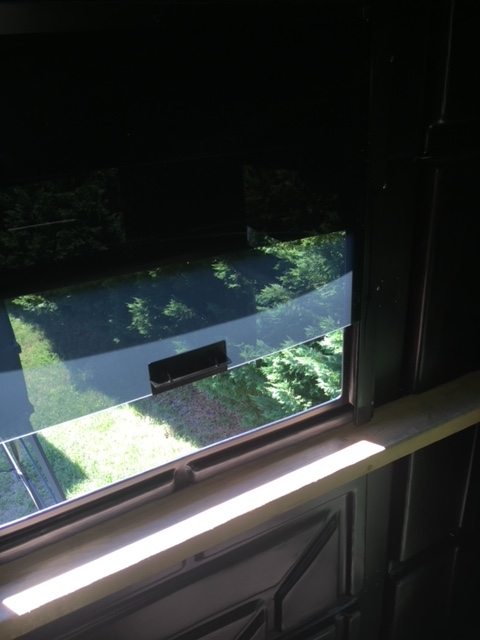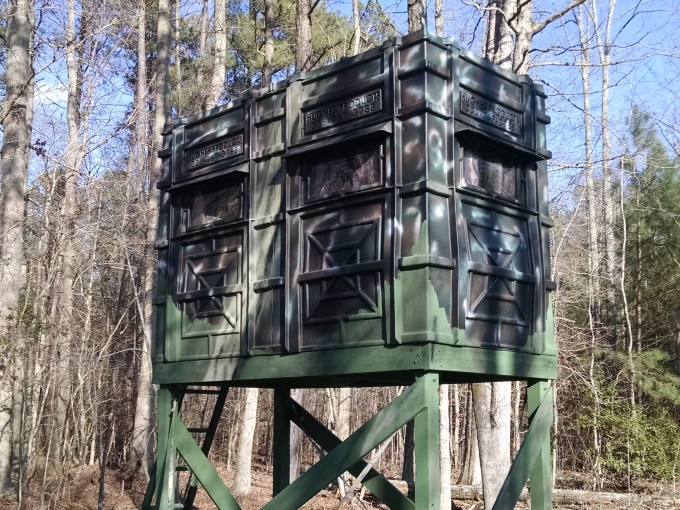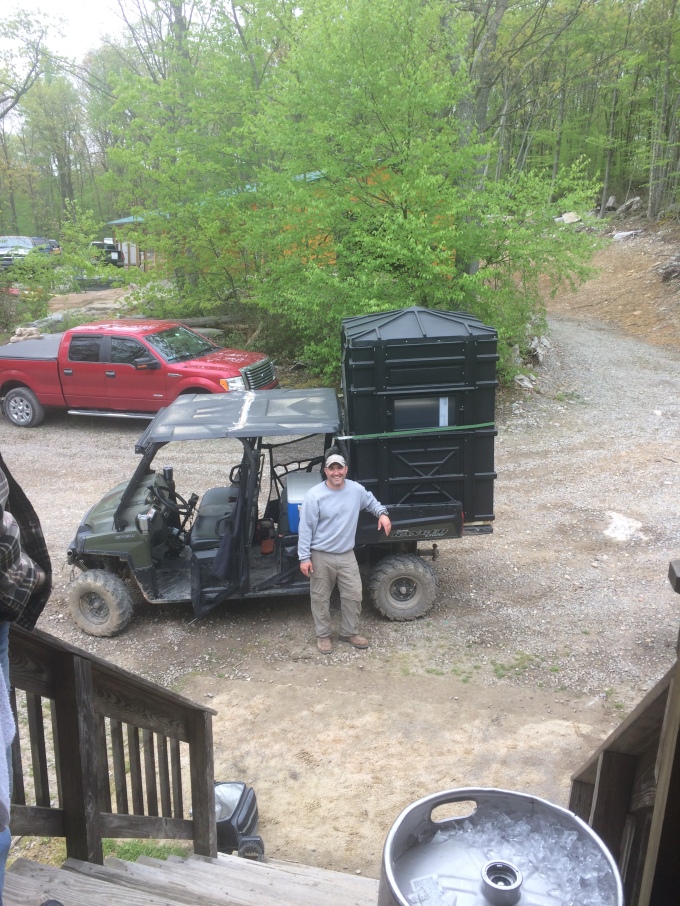There is a major debate spreading hot like a wildfire throughout the hunting industry: Which type of box blind is more suitable for deer hunters around the country – wood box blinds or those made of vacuum-formed plastic? There are, of course, two logical sides to every argument, but the aim of this blog is to truly examine the strengths and weaknesses of each side to determine, once and for all, who will be the ultimate victor in this battle of hunting blind efficiency!
Below you will find two listed categories of hunting blind efficiency, as well as how each type of box blind stacks up against the other in order to properly compare and formulate an educated consensus. Please don’t judge the losing party too harshly when you see how this all pans out!
Firearm Freedom and General Mobility

When it comes to choosing a hunting blind, there was a time when many sportsmen would boast that all they really cared about was one basic question: Can one shelter oneself but also shoot out of it? If the answer was yes, the hunting blind was sold. Nowadays, the industry has become far more complicated, as many hunters have diversified in their preferences, and the technology has gradually improved enough to diversify the supply, causing the entire industry to offer more options based on how hunters choose to shoot their prey. One guy might prefer to elevate his deer stand as much as possible to take advantage of his terrain, while another guy might prefer to stay low to the ground, keep his targets close. For this reason, hunting blinds all seem to be judged critically on how the hunter can adapt his or her firearm to the surrounding land for the sake of the ultimate kill, as well as how easily the hunting blind can be relocated. No one wants to try to hunt out of a blind that provides only one narrow vantage point, for example. The box blinds with the most options in this regard seem to always come out on top. Now let’s examine the difference between most standard wood box blinds and vacuum-formed plastic box blinds in reference to firearm freedom and general mobility…
- WOOD BOX BLIND: Most top-notch wood box blinds come equipped with multiple windows that are covered with plexi-glass, which can adjust accordingly on rails. Wood box blinds can be elevated to almost any height, either propped on a tree or held upward by towers. They are often heavy weight and difficult to disassemble.
- PLASTIC BOX BLIND: Most top-notch plastic box blinds have multiple vantage points with plexi-glass windows that are adjustable. While these blinds can be held upward by towers and propped on a tree, they are also far more lightweight and easier to relocate.
- CONSENSUS: While wood box blinds tend to offer just as many benefits as plastic box blinds in the way of firearm freedom, they can sometimes fall short if you need to make any last minute adjustments in your overall vantage point because they are often too heavy and more difficult to move.
Capacity for Concealment

Many of the strongest supporters of wood box blinds will often argue that these units are simply more of a match for Mother Nature, being as how they are made of wood and wood is pretty much everything that surrounds them on a forest hunting ground. Supporters of plastic box blinds will simply shrug their shoulders and show that adjustments can be made to fix how their units blend in to their natural surroundings. One thing is for certain…It is imperative for every hunting professional to have the advantage of concealment when dealing with nervous creatures like deer. Which type of box blind offers better opportunity for concealment in general?
- WOOD BOX BLIND: Most high-end wood box blinds are easily painted in camouflage that suits almost any environment. Quality is extremely important when it comes to hiding each and every movement you make inside, as wood units can often have narrow points of exposure around windows and doors, especially if the units are homemade or if they have aged. This means that pricing may become a factor in ensuring true concealment, as your best bet is a blind designed with solid plywood panels, which can become expensive depending on the size of the entire unit. If you don’t pay a high price upfront, you may pay it later in maintenance as your wood deer stand battles the elements from rain and wind.
- PLASTIC BOX BLIND: Most high-end plastic box blinds are not only easily painted in camouflage to suit almost any environment, but they are also easily screen-printed in camouflage, offering better protection against erosion and other forms of wear and tear. Since these units are typically made of vacuum-formed plastic panels that can easily be assembled by design to hide all possible exposures, there is less of a chance that hunters inside can be seen from the outside. Quality can also be a factor in this equation (worse quality designs can, of course, still have exposure flaws), but plastic box blinds are cheaper in general, so you likely wouldn’t break bank buying the high-end model instead of the item on clearance. These units also tend to require far less maintenance in the long-run, making them far more durable against weathering.
- CONSENSUS: While wood box blinds can, in fact, blend in well to most surrounding environments, you will likely pay for this privilege, and, even then, you might pay for it again when the weather has its way with your unit. Plastic box blinds, on the other hand, are also easily camouflaged on the outside, but they are far less expensive to ensure quality concealment. They are also far more likely to outlast wood blinds against adverse weather conditions over extended periods of time and more durable in general.
GENERAL CONSENSUS:

So…There’s certainly nothing wrong with opting for a perfectly good wooden box blind when choosing your next prey. However, the debate about wood being a better alternative to vacuum-formed plastic box blinds (such as those designed by Hughes Products Co) is one that is simply a question of personal preference…NOT a question of actual hunting efficiency. In fact, based on reasoning above, plastic box blinds are typically a more efficient alternative in the long run. They are easier to customize to a hunter’s own specific desires, more durable, easier to disassemble and relocate, and, best of all, they typically come with a cheaper price tag!
